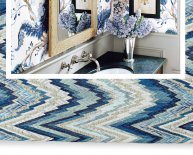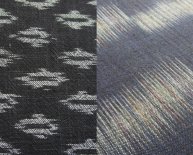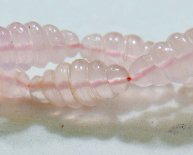
Manufactured fibers examples

What are synthetic fibers?
All you have to do is look around and you to see how important fabric is to our everyday lives. Fabric is used in things like clothing, towels, sheets, blankets, curtains and many other things. For centuries, people relied on natural fibers from plants and animals to make threads for fabrics. These include fibers such as cotton and wool.
So, what is a fiber? It's a hair-like strand of material that can be woven into a fabric. Today many kinds of fabric are made of synthetic fibers, substances that don't come from nature. They are man-made, created by processes that begin in a laboratory. Many synthetic fabrics have attractive appearances and mimic natural substances like silk. Synthetics are often smooth, lightweight and can be wrinkle-resistant.
How are synthetic fibers are made?
Synthetic fibers are made of polymers. The word polymer comes from the plastics industry and it means a chemical substance with molecules that form long repeating chains, a characteristic that is useful in synthetic fibers.
Synthetic fibers begin as chemicals, often derived from products like coal and petroleum. Depending on the type of fabric, chemicals are mixed with acids and alcohol, sometimes heated, and then extruded. Extrusion is a manufacturing process where a chemical substance is pushed through a die or nozzle to form long threads. Think of it as similar to how a spider spins a web.
Illustration of how nylon is made, from a U.S. Navy article on parachutes, 1940sSome synthetic fabrics may be manufactured using metallic, carbon, or glass fibers. To make carbon fiber, a substance called a precursor, often a type of polymer based on plastics or petroleum is spun and then heated to a very high temperature under tension. The end result is a very strong, stable, and lightweight fiber. Carbon fiber contains at least 90% carbon. There are many kinds of carbon fibers, and the companies that make them are very secretive about their exact manufacturing processes. Carbon fiber is now used in areas such as industry, aerospace, high-end cars, biomedical devices, and sporting goods because it is lightweight and very strong.
 Examples of synthetic fibers
Examples of synthetic fibers
One of the first synthetic fibers created was Rayon (1910), made by processing and spinning a sticky cellulose or wood pulp solution into a silk-like fiber. Rayon is an artificial fiber but not a true synthetic because it comes from regenerated fibers, natural materials that are processed or manipulated into a fiber structure.
Detail of a fabric made from Rayon fiberNylon was one of the first true synthetic fibers. In 1939, scientists at the DuPont Corporation invented it by mixing chemical substances derived from coal and oil, then pulling strands from it. The strands were then put through a cooling process to form long elastic threads. Nylon immediately became a best-selling product, used for a diverse range of products from women's stockings to parachutes.
Woman examining a nylon stocking, ca. 1954. See how the stocking stretches in her hands. That is one of the qualities of nylon fiber.Another synthetic fiber, polyester, was developed in 1953 from a chemical reaction involving coal and petroleum-based substances. Scientists mixed the substances with a combination of alcohol and acids, and then extruded it, creating a synthetic fabric with silk-like qualities. Familiar trade names like Dacron and Mylar signal fabrics using polyester fibers.
Unlock Content
Over 30, 000 lessons in all major subjectsGet FREE access for 5 days,
just create an account.
















